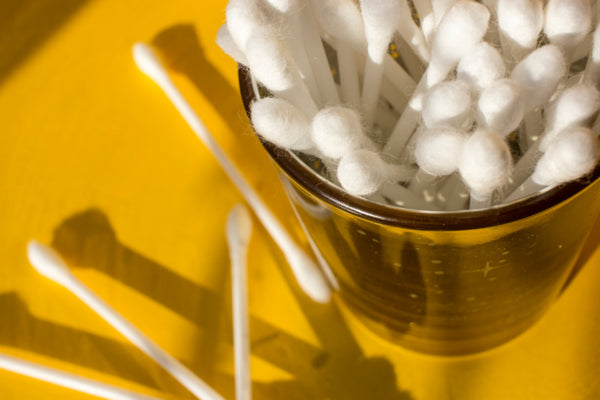
Ear wax – it’s not glamorous, but it does need some consideration. Ear wax, or cerumen, is a natural secretion that helps to keep the ear canal clean. However, it can accumulate and cause a blockage, which may lead to you experiencing a temporary hearing loss as sound cannot easily travel through to the inner ear. Luckily, the issue can be easily addressed.
Waxing lyrical
Ear wax is a yellowish substance secreted in the ear canal, and is made up of oily secretions, old skin cells and dust. It keeps the ear canal lubricated and clean by trapping small particles, bacteria and other foreign objects, preventing them from reaching (and potentially damaging) the eardrum. Due to its moist, sticky texture, it also helps to moisturise the skin in your ear.
Don’t try DIY
Normally wax naturally works its way out of the ear, taking any trapped dust and debris with it, so our ears are actually self-cleaning! However, sometimes the wax can be pushed deep within the ear canal, causing a blockage and subsequent difficulty in hearing. Apart from a noticeable hearing loss, ear wax can also cause itching, dizziness, ringing and occasionally even pain.
One of the common causes of such a blockage is the use of cotton buds, as these only clean the superficial wax, pushing the rest deeper into the ear canal. Similarly, you should not use paper clips, hairpins or other items to try to remove wax yourself – the ear is an extremely sensitive, delicate organ so a slight slip could cause long-term damage.
What you can do
Ear wax should only ever be removed by a fully-trained professional. Leightons’ experienced audiologists use the latest technology to assess your hearing, and can remove any wax that may be obstructing your ear canal. It may occasionally be the case that ear drops need to be used for a brief period before removal to help soften the wax, although your audiologist will advise of this prior to your appointment.
Wax is removed using one of the following methods:
Manual removal
- Uses an instrument called a Jobson horn, which is a long and thin with a hoop or spoon-shaped tip
- Suitable when the wax build-up is small and accumulated near the ear canal entrance
Water irrigation
- It involves the use of water to gently dislodge and flush out the earwax, and is safer than the previously used ‘syringing’ method
- Useful when the wax build-up is larger and further into the ear canal
Call us today
At Leightons Opticians and Hearing Care, we offer a wax removal service that is gentle and effective, carried out by experts. Ear Wax Removal costs £70 for both ears.
For more information or to book an appointment, call us on 0800 40 20 20 or visit your nearest branch.








